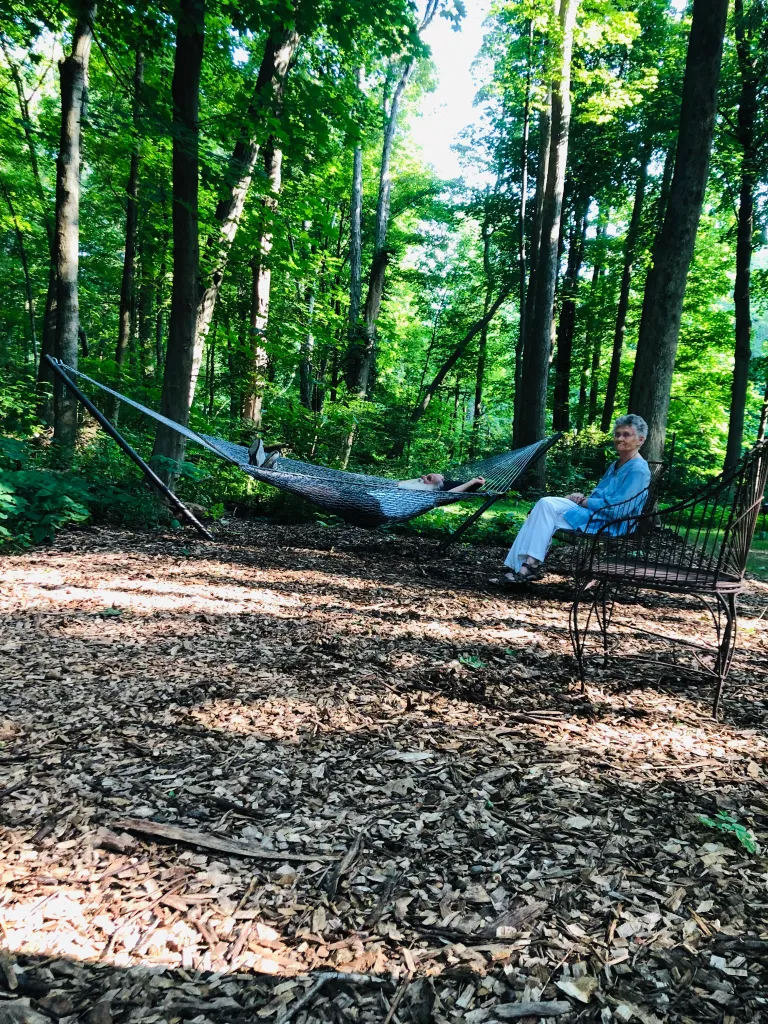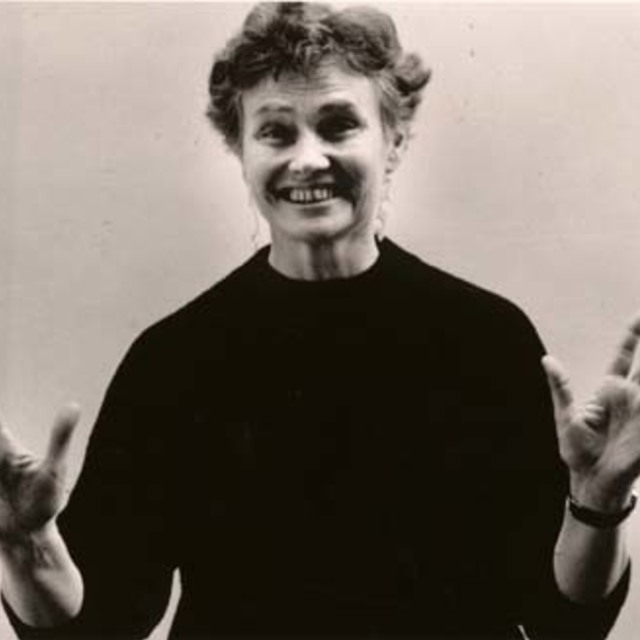In our Composer Spaces series, we ask composers to share a bit about their working environment and to give us a brief insight into their process. This week we present composer, Annea Lockwood.
What does a typical composing day look like for you?
My days are definitely free-form, my plans often subject to spontaneous interference, but here's an outline of two working days this week:
August 15 - at Rye Beach (on Long Island Sound, NY) with a terrific artist and good friend, Liz Phillips, making recordings with hydrophones for a project we're thinking about.
August 16 - I was at the Caramoor Center for Music and the Arts meeting Bob Bielecki to check out our sound installation there, Wild Energy; making sure the outdoor speakers were still performing well, among other small tasks. (See photo of the site below.)
Next week I will be working with the group Yarn/Wire on a collaborative composition, (Into the Vanishing Point), which originated with our responses to an article on the alarming disappearance of insect populations in various places. That involves a long caffeinated drive to Queens borough, so takes much of the day.
Please describe the space where you compose your music. What makes this space special and why have you chosen it?
I have both an office and a studio. The latter is the space I most love to work in - down in the basement, far from phones or any other distractions, with two small windows looking out onto the grass, trees, a neighbouring house. It was recently renovated and is now light blue and white; a large table for my old analog mixer, laptop (running Pro Tools etc), two interfaces, one for an older system, one new, a monitor and two older computers, two Genelec speakers and a subwoofer. On one wall are wire shelves filled with gear - mics, cables, etc. and below those some glass jars from my old Glass Concert days. On the opposite wall are books, manuals, catalogues etc. and on the remaining areas of the wall a Serbian poster showing the old channels of the Danube, a print of a Hokusai painting of Mt. Fuji in winter and a small print of a Klee painting. A beautiful little stone which I've had for many years sits on the table, a conch shell in one of the windows. This is the room most conducive to working, a place full of pleasure.
Please describe your typical composing process.
The collaborative concert pieces I have been doing recently evolve gradually, usually starting with my asking the players what sounds they most love to explore. I tape those sessions, make notes and begin to work on a possible structure based on those responses. This is how 'Becoming Air' the collaboration with trumpet virtuoso Nate Wooley, began back in 2016. We create the piece from that ground.
For 'Into the Vanishing Point' I asked the four members of Yarn/Wire to each assemble a unique 'vocabulary' of very quiet sounds - sounds at the threshold of hearing. For the first meeting, I brought a rough structural outline, really based on a sort of progression of expressive intensity, bearing in mind the underlying disappearances mentioned above. We continue to refine and develop both sound resources and structure and will premiere the piece on November 14th in a composer portrait concert of my music at the Miller Theatre in New York.
I attach a recent photo of composer Earl Howard and myself listening to the installation Wild Energy, taken by Liz Phillips, the installation artist, at Caramoor, Katonah, New York.

SOUNZ blog is designed for expressive discussion and debate amongst the arts and broader community. This is intended to be a safe space so please remember to keep comments respectful and avoid personal attacks, criticisms of specific organisations and defamatory language. Comments are moderated to ensure that they comply with SOUNZ’s Community guidelines.
